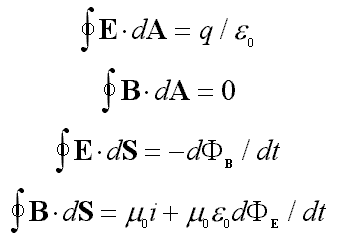Apr 30 2008
HP makes memory from a once-theoretical circuit
Author: Michael Kanellos
It's the tale of the lost circuit.
Thirty-seven years ago, Leon Chua, a professor at the University of California at Berkeley, mathematically theorized that scientific symmetry demands that there should be a fourth fundamental circuit element. Engineers were already familiar with resistors (which resist the flow of electricity), capacitors (which store electricity), and inductors (which resist changes to the flow of electrical current), which can be combined to build more complex devices. The fourth circuit, which Chua called a "memristor" for memory resistor, would register how much current had passed.
"He looked at fundamental circuit equations and noticed there was a hole," said Stan Williams, who heads up the Information and Quantum Systems lab at HP Labs, "There should be a device that remembers how much current flowed through a device."
An atomic force microscope image of a circuit with 17 memristors in a row. The memristor consists of two titanium dioxide layers connected to wires. When a current is applied to one, the resistance of the other changes. That change can be registered as data. (Credit: J.J. Yang, HP Labs)
Williams and other scientists at Hewlett-Packard are publishing a paper in Nature on Wednesday demonstrating that that these things actually exist. HP has a few discrete memristors as well as a silicon chip embedded with memristors. It's a first, according to HP.
If memristors can be commercialized, it could lead to very dense, energy-efficient memory chips. Scientists have made devices that function like memristors, but it took a good number of transistors and several capacitors, Williams said. Memristor chips would function like flash memory and retain data even after a computer is turned off, but require less silicon, consume less energy, and require fewer transistors.
A memristor effectively stores information because the level of its electrical resistance changes when current is applied. A typical resistor provides a stable level of resistance. By contrast, a memristor can have a high level of resistance, which can be interpreted as a computer as a "1" in data terms, and a low level can be interpreted as a "0." Thus, data can be recorded and rewritten by controlling current. In a sense, a memristor is a variable resistor that, through its resistance, reflects its own history, Williams said.
Varying resistance is the same principle at work with phase change memory. The difference in phase change memory, which will come to market later this year, is that changes in resistance are accomplished through a substantial amount of heating. A bit on a CD-like substrate is heated rapidly a few hundred degrees and then cooled. Depending on how rapidly the bit cools, the material becomes crystalline or amorphous. The different states--crystalline and amorphous--exhibit different states of resistance.
"We can get it (resistance changes) with less energy," Williams said. "It is a large amount of resistance change with a small amount of memory."
The secret sauce in HP's memristors is two layers of titanium oxide, a crystalline material consisting of one titanium atom and two oxygens, sandwiched between two metal wires. The bottom layer consists of standard, consistent titanium dioxide. The upper layer is missing a few oxygens--less than 1 percent--which creates voids. When a current is applied (via the wire) to the upper layer, the vacancies are pushed into the lower level of titanium dioxide. That changes the resistance of the lower level. Subsequent bursts of current can then reverse it.
"All we have to do is push around a very small number of vacancies in a crystalline material," Williams said. "We can switch it very fast, faster than we can measure."
Pushing the voids into the consistent layer of titanium dioxide does not change its characteristics otherwise. He likens it to bubbles in beer. "You can have bubbles in it, but it's still beer," he said.
Memristors in green. The wires in this image are 50 nanometers wide, which comes to about 150 atoms.(Credit: J.J. Yang, HP Labs)
Memory and storage are the new frontier for chip designers. The explosion of data will require new ways to retrieve and store it. Cloud computing? It's a big hard drive, if you think about it. Numonyx, the Intel and STMicroelectronics joint venture, is leading the effort to commercialize phase change memory. IBM is working on ways to store data through magnetic charges on a wire. Seagate Technology, Hitachi, Zettacore, Grandis, and others are working on different memory and storage concepts.
HP has largely exited the chip business, but it has increased efforts to license the intellectual property inside its labs. The company, for instance, will likely try to commercialize the crossbar latch technology, which allows molecular grids to perform calculations. (Williams also works on that.)
While memristors can be made on silicon chips, memristor devices will require engineers to learn a new circuit design discipline.
"The technology is in good shape. The big barrier is not whether you can make it," Williams said. "It is the effort to design new circuits."
